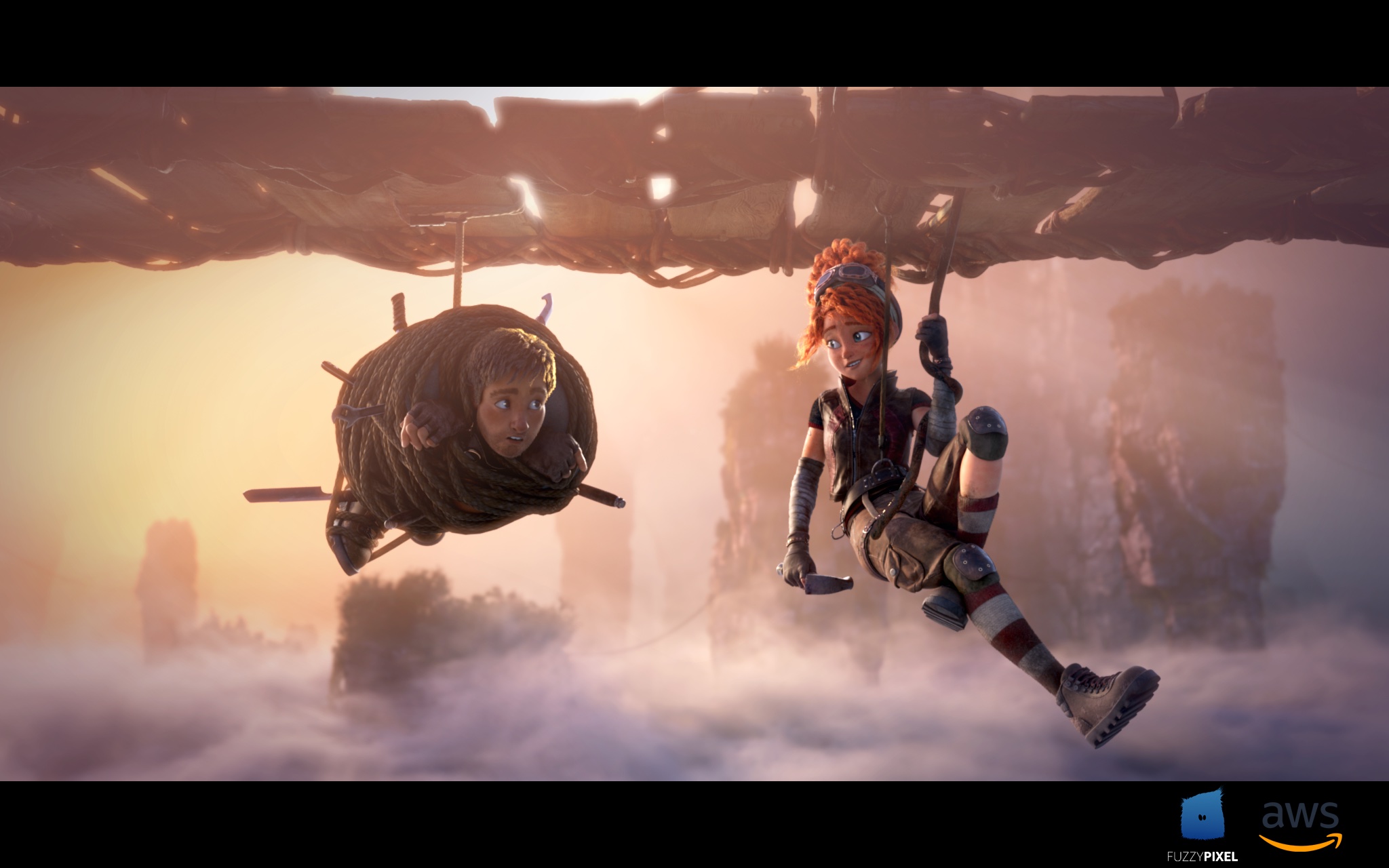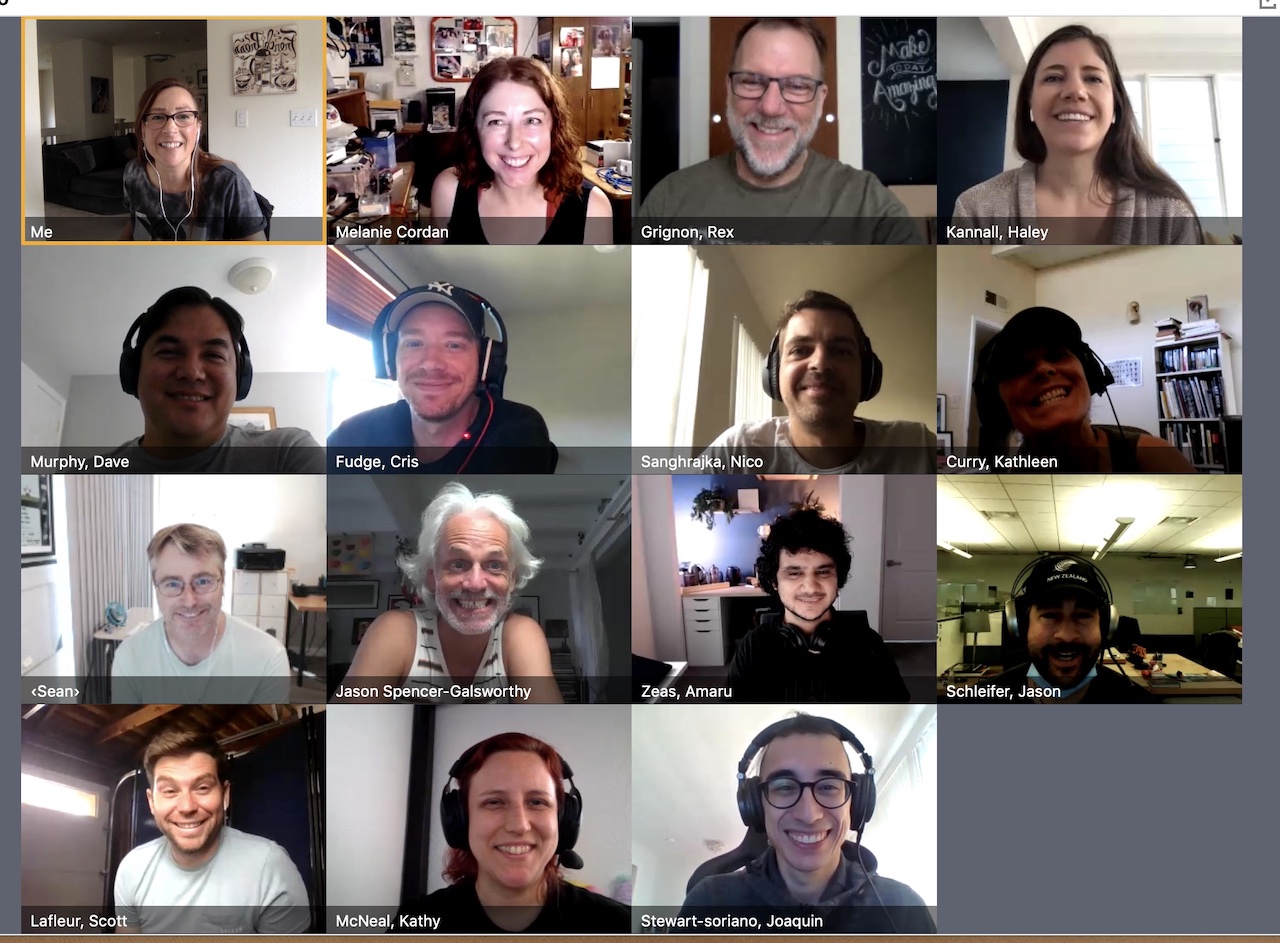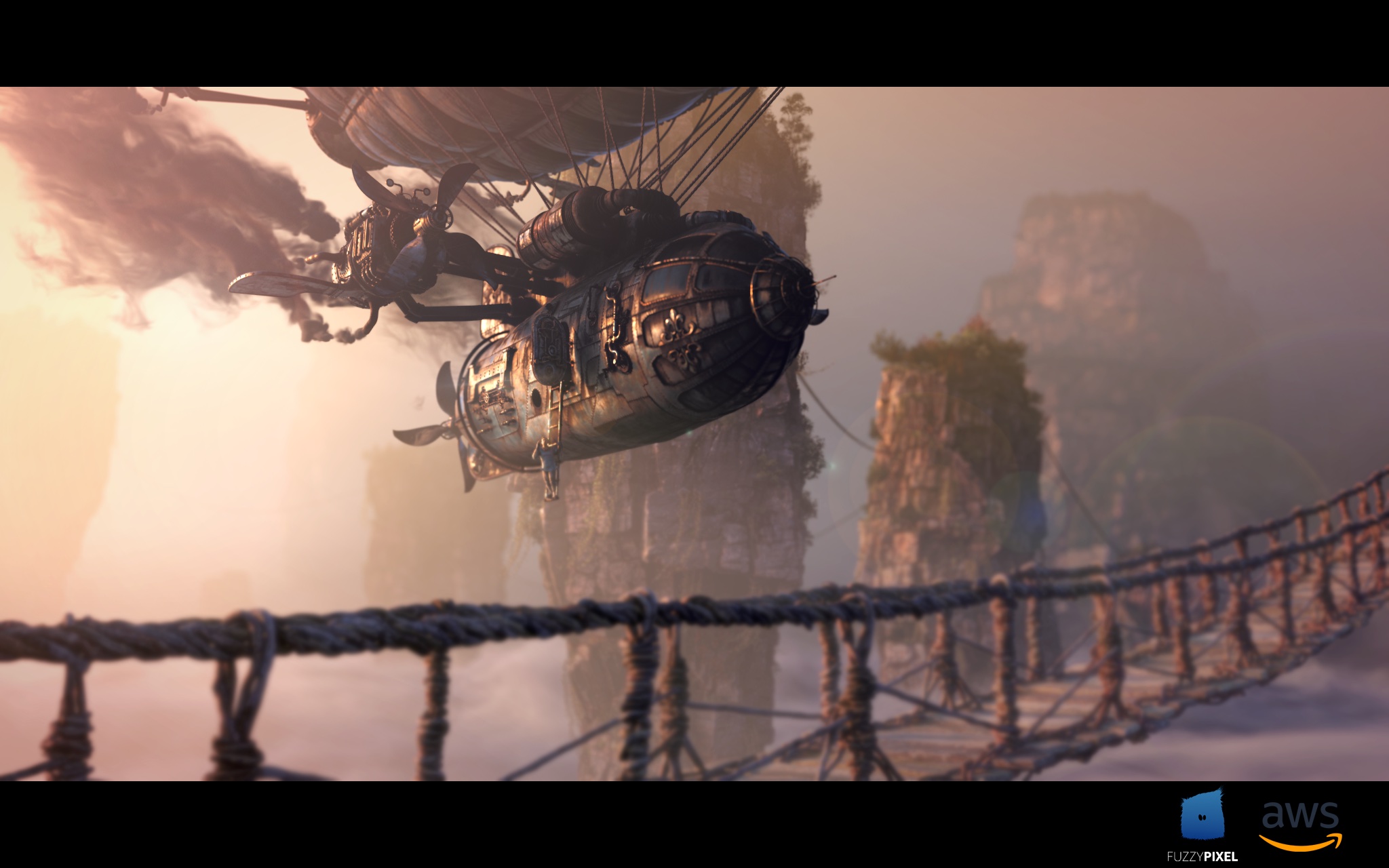

How FuzzyPixel Harnessed Cloud Tools To Create Its Short Film
From hand-drawn celluloid to real-time 3d workflows, animation techniques have advanced over the decades. With each new technological breakthrough, artists gain more powerful storytelling capabilities. Given the sudden, necessary focus on remote workflows in 2020 and beyond, the cloud has become a vital tool for studios and artists to meet delivery schedules and scale capacity to meet increased demand for content.
FuzzyPixel was born in the cloud. The animation studio’s core team of artists and producers, as well as freelancers, rigorously test Amazon Web Services (AWS) technology on real-world productions, collaborating remotely to create high-quality animated short films. The team’s work and findings shape the ongoing development of AWS services and features.
A longtime animation industry veteran, producer and design manager Jen Dahlman helps lead FuzzyPixel projects, drawing from more than 20 years of experience that includes credits for Dreamworks’ Shrek and How to Train Your Dragon.
Ahead of the April 2021 Amazon Nimble Studio launch, Dahlman and the FuzzyPixel team, which also includes fellow animation industry standouts Rex Grignon and Jason Schleifer, created a 90-second animated short, Spanner, to showcase the capabilities of an AWS-powered animation workflow. Below, Dahlman discusses lessons learned and how cloud-based technology is making distributed artistic collaboration more accessible, creative, and powerful.

Cartoon Brew: Tell us about the short film.
Jen Dahlman: Set on a bridge suspended above the clouds, Spanner provides a small peek into a dynamic world. It centers on a satirical interaction between two bridge engineers (“spanners”) and features a colorful otherworldly feel. Each element of the short, from the detailed salvaged airship to the misty atmosphere, was informed by creative and technical considerations.
Our goal was to deliver a compelling story that would also highlight the technical complexity that can be achieved with the cloud. We also wanted to gain a better understanding of the filmmaker’s end-to-end experience with cloud-based production. By taking this journey in the trenches, we’re better equipped to build services that hold up to the rigors of real-world production.

How long did it take to make the short?
We spent a few months on pre-production, and animation was completed in about seven weeks, wrapping up in November 2020. Most of the rendering was done in the last two weeks, which we were able to do because we were using AWS. If we tried to render with on-premises hardware on that timeline, it would have been very difficult and expensive to build up a farm to the scale we needed.
How big was the team on this project?
In addition to director Rex Grignon, creative director Jason Schleifer, and myself, we had nine FuzzyPixel artists and 13 contract artists for a team comprising 24 people. We were all working remotely, and for this project, everyone was U.S.-based.
How did you keep the project on track while working remotely?
Remote collaboration may be relatively new for some, but I’ve been working this way with Rex and Jason since 2002. We’ve learned the value of face time, and lively virtual dailies sessions were crucial for artists to feel connected and engaged. Fostering a strong creative environment that allowed for artistic exploration was very important to us, even as our team tripled in size.
We were also mindful to set the artists up for success and make the technology invisible so that they could focus on making compelling art. During production, one of our artists had to move locations three times due the California wildfires. They were able to remain connected with the team, even throughout a stressful time, since their hardware needs were simple. All the compute power they needed to craft the performance was available on AWS.

Video reference was also key for the animation. We roughed out the whole short with video reference, and tested out a few movement options to see what worked best and would sell the shot. In this process, we’d sometimes get some happy accidents and learn just how much the animators understood the characters and our end goals. We could all look at the same reference together and provide instant clarity on notes.
Working on the cloud was especially valuable for lighting and compositing. Artists would get render results right away and that helped drive creative choices, instead of having the creative choices limited by what could be accomplished with on-premises gear.
What are some of the less obvious benefits of using the cloud for animation?
After completing the short, the team was able to review and analyze the production from beginning to end, and ultimately learned a lot. Production waterfall schedules are typically built on estimates and evolve as the production progresses. The way we set up our pipeline for Spanner, we could literally see how many times we opened certain virtual machines or executed tasks and tag any resource.
All this data helped us make more informed budgeting decisions and can easily be applied in other production environments. You can’t compress creativity, but when artists have the tools to stay more immersed in their work, they can spend more of their time creating.

What tools did you use?
Spanner was animated entirely on AWS, with each artist connecting to virtual workstations running on Amazon Elastic Compute Cloud (EC2) G4dn instances via the NICE DCV streaming protocol. Amazon Simple Storage Solution (S3) was used for storage, and rendering was done with EC2 Spot Instances.
We deployed a range of creative applications, including Autodesk Maya; Side Effects’ Houdini; SpeedTree; Pixologic’s ZBrush; Adobe Substance, Photoshop, and After Effects; and Peregrine Labs’ Yeti; with compositing done in Foundry’s Nuke, rendering in Autodesk Arnold using AWS Thinkbox Deadline for compute management, and Autodesk ShotGrid for production management. We used SyncSketch and Amazon Chime to complete review sessions.
At (the virtual) SIGGRAPH 2021, Jen Dahlman will be presenting “The making of animated short Spanner” along with Grignon, Schleifer, and cg supervisor Haley Kannall. For details and free registration, click here. Learn about other projects created on AWS by visiting its website.
Watch Spanner below:

.png)